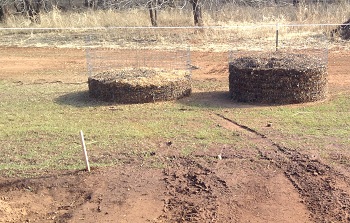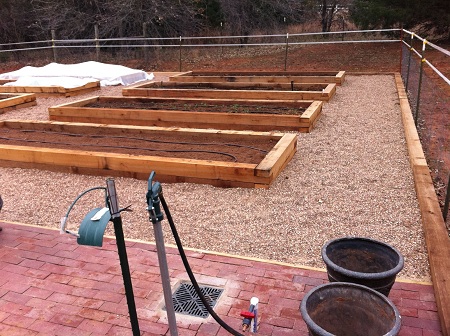If I have any secrets about gardening, it is chickens. Specifically how to use chicken litter compost to improve soil in a raised bed. In raised bed gardening you will use the same soil year after year so it is important to amend the soil. Once the beds are ready they are filled with the best soil available. Chicken compost can be added to increase nitrogen and organic material. The picture above is a yummy recipe for success.
Fresh eggs, heirloom tomatoes and crookneck summer squash all come together in July. I look at composting like a cycle of life. The long days of summer are the best place to start. It takes time to take shape. Egg production is stimulated by long days. Hens are hungry and they love to eat from the garden. Their appetites produce lots-o-littler in the coup. All this poop must be cleaned up. I use a method that reduces the work and yields good quantities of litter ready for the compost pile.
Chicken manure needs lots of carbon to compost well and reduce its ‘heat’ before adding to the garden. So I use wood shavings to cover the floor of the coup. After I make a layer of shavings, I add diatominous earth (DE) a powder of finely ground sea shells. DE is a powder that is abrasive to pests, helps dry the litter and really knocks down the stink. Once the DE finds its way into a raised bed it adds calcium to the soil. Once the chickens have made a mess of this I make another layer of wood shavings and DE. Three layers produce two or three large wheelbarrows of chicken litter for the compost pile.

We use wire mesh hoops made from old fences to form the piles. The chicken litter is concentrated so we add it in with layers with grass clippings, ground up leaves and residue from weeding around our place. If we have any compost that is done, I like to add a small scattering of it to each layer of the pile to inoculate the pile. My hens help make about 5 piles a year. They are great producers! They also lay from 1 to 3 dozen eggs a day. I think that everyone that gets these eggs really enjoy them too.
Turning a compost pile speeds the decomposition. If a pile is left untouched it still makes great compost but will take about a year to finish. A well turned pile will finish in half that time or less. If you turn your pile you will need several piles to work with. Probably the easiest way to turn a pile is to use a garden fork to shovel one pile into another pile. We lift our wire hoops off the pile and set it next to the pile. Then shovel the pile back into the hoop. Two turnings and four months in summer and the pile will be about done. Add water when you turn if it is dry. To really cook, a pile needs moisture.
Except in winter our pile really heats up. Dig a hole down into the pile and place a thermometer. Our pile ‘cooks’ at about 140 degrees F. Grass clippings are really hot. This heat of decomposition is a good measure of how quick your pile is cooking down to the rich black earthy elixir that is compost. It will have a rich earthy smell and is fluffy (almost like potting soil).
One good pile is enough for about 3 inches of compost in two of my 4′ x 16′ beds. I add crushed limestone to reduce acidity and help tomatoes absorb the calcium. This also prevents blossom rot on tomatoes, a calcium deficiency in the plant sometimes caused by the combination of rich chicken litter and highly acid soil.
The soil in each of my beds is rich and loamy. It yields heavy production. I am very happy to give any of this back to my chickens. They only get the C grade fruit but they are delighted with all offerings when it is fresh from the garden. I keep them happy and they me.







